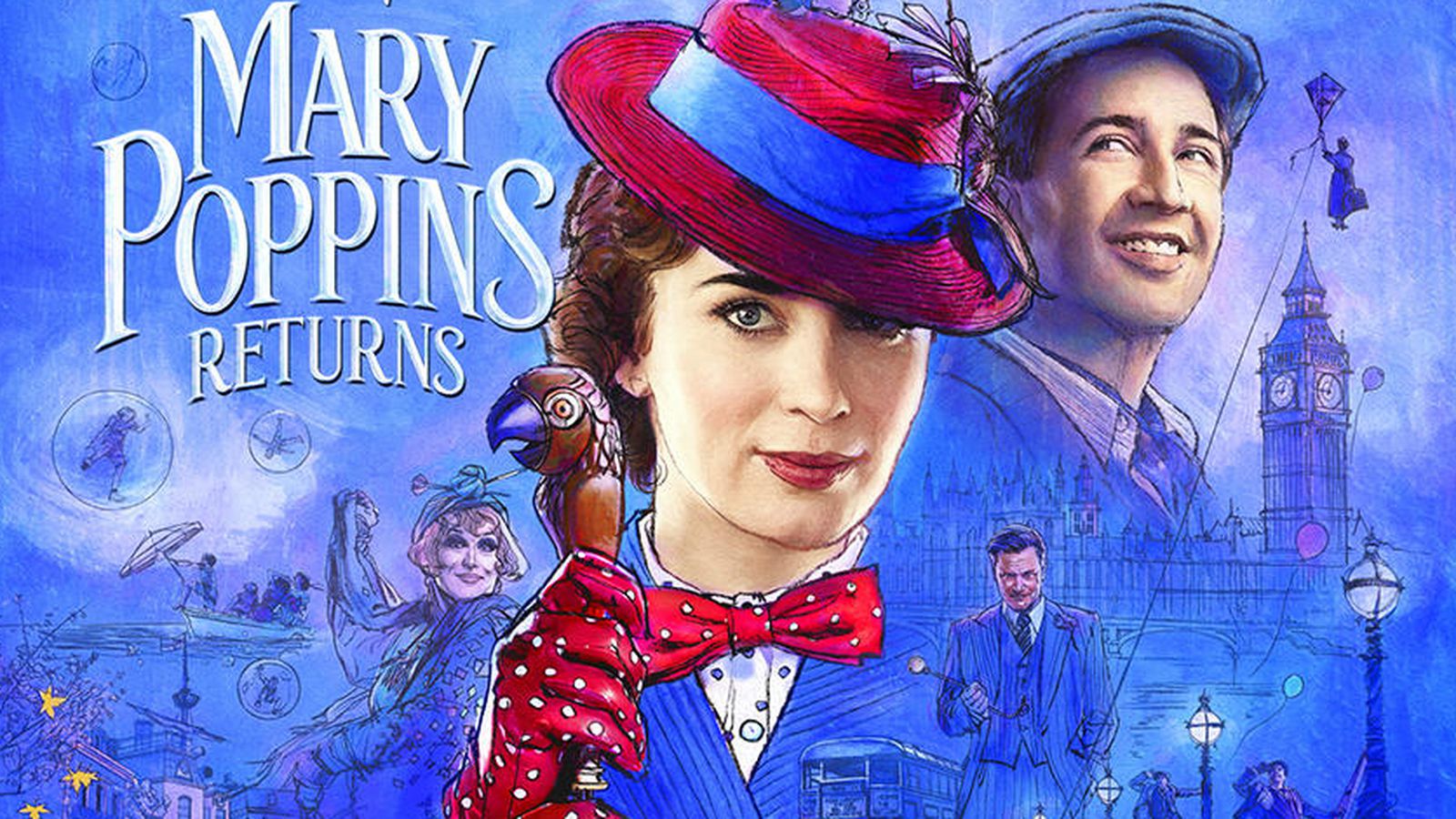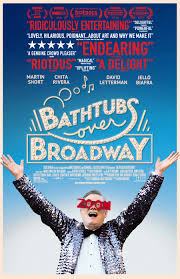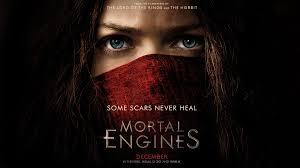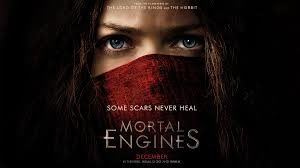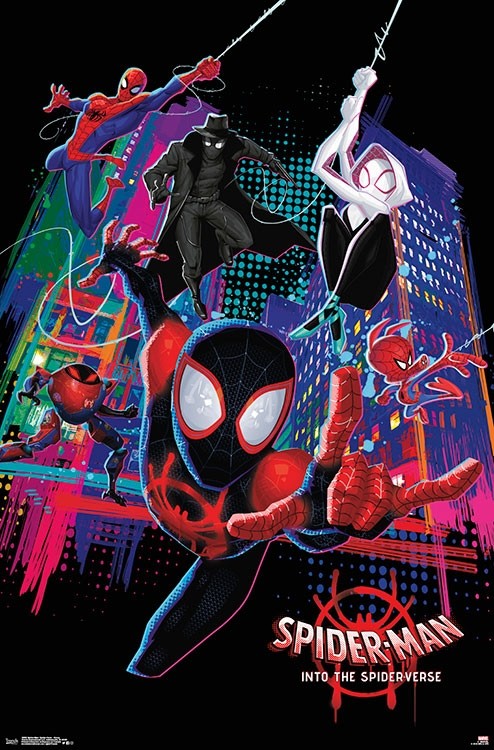Mary Poppins Returns
Posted on December 18, 2018 at 10:25 am
A-| Lowest Recommended Age: | Kindergarten - 3rd Grade |
| MPAA Rating: | Rated PG for some mild thematic elements and brief action |
| Profanity: | Mild language in a song |
| Alcohol/ Drugs: | None |
| Violence/ Scariness: | Some peril, references to sad death of parent |
| Diversity Issues: | None |
| Date Released to Theaters: | December 19, 2018 |
| Date Released to DVD: | March 18, 2019 |
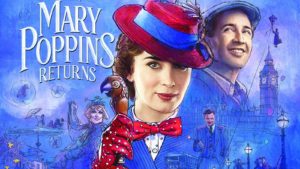
In the first film, she was nanny to Jane and Michael Banks. She took them on magical adventures that included a tea party on the ceiling and diving into a chalk picture for an animated musical number with dancing penguins. But the real magic she brought to the Banks family was a reminder of what was important. The fond but distracted parents learned that it was more important to fly a kite with the family than to keep the job that supports the family and its domestic employees or fight for the rights of women. (Well, the 60’s was a complicated time. But the message of family connections is still valid.)
This sequel very sweetly brings Mary Poppins back, once again arriving from the sky via a parrot-head handled umbrella, again to care for the Banks children, meaning the now-grown Jane and Michael Banks (Emily Mortimer and voice of Paddington Ben Wishaw). Oh, and Michael’s three children, too, who have taken on too many adult responsibilities as the family still mourns the loss of their mother. Jane works for the rights of workers and does her best to help her brother and his children, who still live in the old house on Cherry Tree Lane.
They may lose the house, though, as Michael cannot pay the bank, yes, the same one his father worked at, what he owes. It’s now run by Mr. Wilkins (Colin Firth), who promises he will do everything he can to help Michael, but who shows up as a wolf in an animated adventure when Mary Poppins takes the children into the design on their late mother’s porcelain bowl, so perhaps he should not be trusted.
Jane and Michael remember Mary Poppins, but now believe that they only imagined the magical adventures. They have lost their ability to see magic in the world. Mary Poppins, with her brisk, no-explanations manner, has come back to show them how to find it. And that means a visit to another of her eccentric relatives (Meryl Streep, enjoying herself enormously), and journeys undersea via the bathtub and into the sky with balloons. And it means singing and dancing, too, with a wild music-hall-style number in an animated theater and a tender ballad about The Place Where Lost Things Go. Plus, Dick van Dyke is back. And he dances.
We take it for granted that this movie would have visual Disney magic. No one assembles a more gifted collection of production designers, costume designers, and visual effects designers than Disney, and no studio has a better, more organic sense of its own history and culture. So when Disney decided to revisit the 54-year-old classic based on P.L. Travers’s novels, after having already mined its own history with a movie about the making of that movie, it was fair to expect that it would look and feel as though we had never left. The magic touch is there, with gentle references to the earlier film, including the animated adventure with a retro, hand-drawn, cel-based look along the lines of Disney’s specialty, and an enchanting appearance from Dick Van Dyke, who played two characters in the original. Emily Blunt as Mary Poppins and “Hamilton’s’ Lin-Manuel Miranda as her lamp-lighting friend are practically perfect in every way. And, as “Saving Mr. Banks” reminded us, the real magic, is that at its heart it is not just about fantasy adventures but about healing the family. The songs, the special effects, the imagination are a lot of fun but what makes this movie top ten-worthy is the heart.
Parents should know that there are references to a sad death of a parent, worries about money, and some situations with mild peril. A song has some mildly spicy lyrics with references to nudity.
Family discussion: Which was your favorite adventure? Why didn’t Mary Poppins stay?
If you like this, try: the books by P.L. Travers and the classic original film

